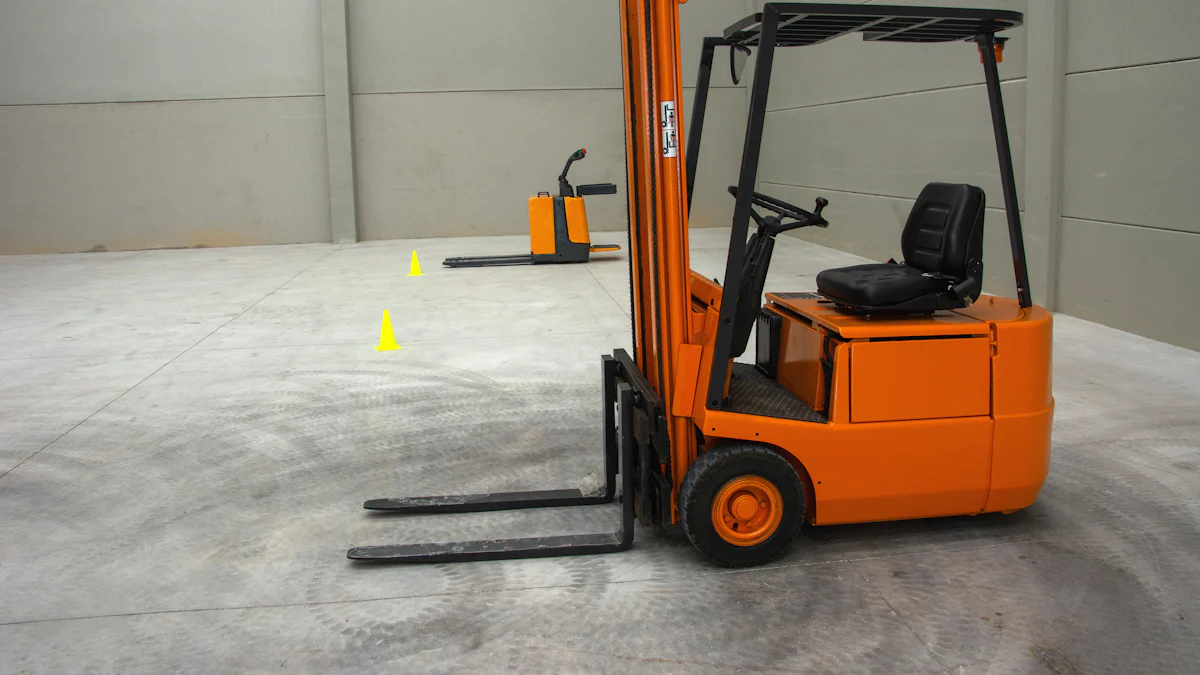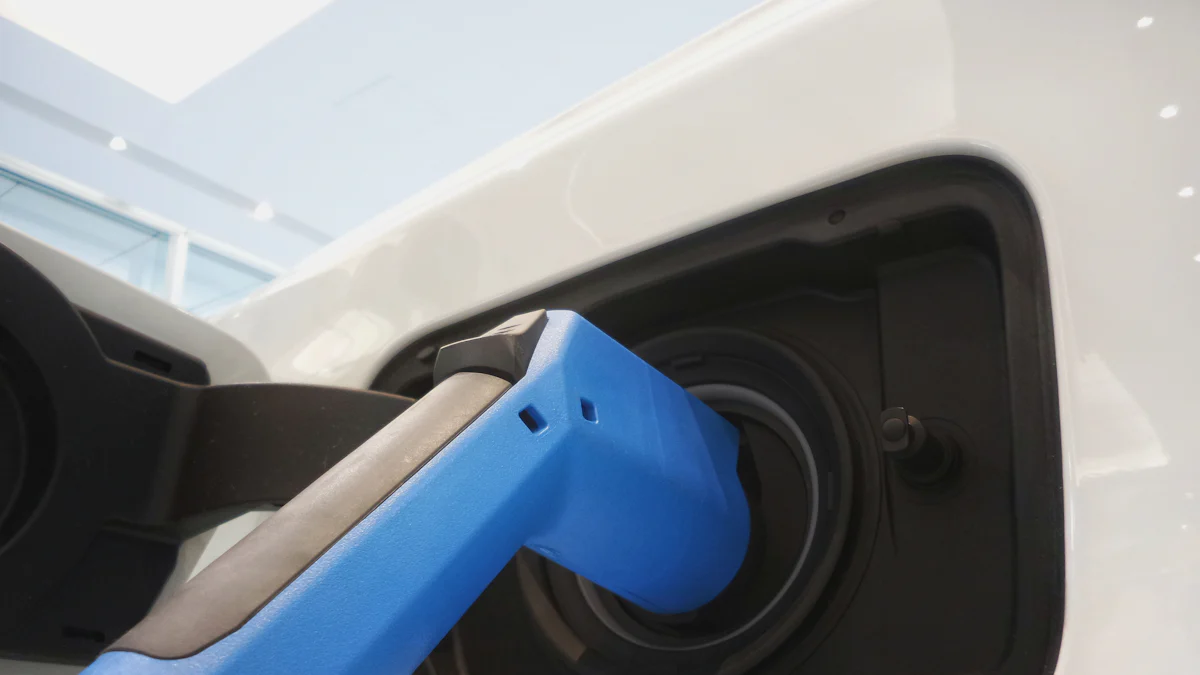
Properly charging an electric pallet jack is crucial for maintaining its functionality and ensuring operational efficiency. This blog provides a comprehensive guide on the charging process, from understanding different types of electric pallet jacks to step-by-step instructions for safe and effective charging. By following the outlined procedures, operators can prolong the lifespan of their equipment and prevent common issues related to improper charging practices. Safety precautions are highlighted throughout to emphasize the importance of a secure charging environment.
Understanding Your Electric Pallet Jack
When it comes to Electric Pallet Jacks, there are various types available, each with distinct features and charging requirements. Understanding these differences is essential for efficient operation and maintenance.
Types of Electric Pallet Jacks
Manual vs. Electric
- Manual Pallet Jacks: Operated by physical force, these jacks are suitable for lighter loads and require manual maneuvering.
- Electric Pallet Jacks: Powered by electricity, these jacks offer enhanced efficiency for heavier loads and longer distances.
Components of an Electric Pallet Jack
Battery Types
- Lead-Acid Batteries: Commonly used in electric pallet jacks due to their reliability and cost-effectiveness.
- Lithium-Ion Batteries: Emerging as a popular choice for their lightweight design and longer lifespan.
Charging Ports and Indicators
- Ensure the compatibility of the charger with the specific charging port of your electric pallet jack model.
- Monitor the charging indicators to track the progress and ensure a complete charge cycle.
Preparing to Charge

Safety Precautions
Personal Protective Equipment (PPE)
- Wear protective glasses and gloves when inspecting the battery to prevent any contact with corrosive substances.
- Ensure the charging area is well-ventilated to disperse any gases emitted during the charging process.
- Avoid smoking or using open flames near the electric pallet jack while charging to prevent potential hazards.
Safe Charging Environment
- Prioritize safety by keeping the charging environment clean and free from any obstructions that could lead to accidents.
- Follow strict guidelines to maintain a safe distance between the charger and any flammable materials in the vicinity.
- In case of battery leakage, handle it with caution, wearing appropriate protective gear, and seek professional assistance if needed.
Initial Checks
Inspecting the Battery
- Examine the battery for any signs of damage, leaks, or corrosion before initiating the charging process.
- Check for loose connections or exposed wires that may pose a safety risk during charging.
Checking the Charger
- Inspect the charger for any visible damage or irregularities that could affect its performance.
- Verify that the charger is compatible with your electric pallet jack model to avoid potential malfunctions.
Charging Process
Step-by-Step Charging Instructions
Powering Down the Pallet Jack
To begin the charging process, power down the electric pallet jack by switching it off using the designated control. This ensures a safe environment for connecting the charger and prevents any potential electrical hazards during the charging procedure.
Connecting the Charger
Next, connect the charger to the electric pallet jack’s charging port securely. Ensure that the connection is firm to avoid interruptions in the charging cycle. Refer to your user manual or manufacturer’s guidelines for specific instructions on how to correctly attach the charger to your pallet jack model.
Monitoring the Charging Process
Throughout the charging duration, monitor the progress by observing the charging indicators on both the charger and pallet jack. These indicators provide valuable information about the battery’s status and ensure that it is charging effectively. Regular monitoring helps prevent overcharging and maintains optimal battery health.
Disconnecting the Charger
Once the battery is fully charged, disconnect the charger from the electric pallet jack carefully. Safely remove any cables or attachments without causing damage to either component. Proper disconnection prevents any electrical mishaps and ensures a smooth transition back to operational use.
Charging Tips for Longevity
Avoiding Overcharging
To prolong your electric pallet jack’s battery life, avoid overcharging by adhering to recommended charging times provided by the manufacturer. Overcharging can lead to decreased battery performance and potential safety risks. Following proper charging guidelines preserves your equipment’s longevity and operational efficiency.
Regular Maintenance
Engage in regular maintenance practices to keep your electric pallet jack in optimal condition. Inspect the battery, connectors, and charger for any signs of wear or damage periodically. By maintaining a well-functioning charging system, you enhance equipment reliability and minimize unexpected downtime.
Troubleshooting Common Issues
When pallet jack users encounter issues with their equipment, it is essential to address them promptly to maintain operational efficiency. Understanding common problems like the battery not charging and charger malfunctions can help resolve these issues effectively.
Battery Not Charging
Possible Causes
- Insufficient Power Supply: If the pallet jack is not plugged into a functional power source, the battery may fail to charge.
- Damaged Charging Port: A damaged or faulty charging port can prevent the battery from receiving a charge.
- Battery Age: Over time, batteries may degrade, leading to difficulties in holding a charge.
Solutions
- Check Power Source: Ensure that the pallet jack is connected to a working power outlet to provide sufficient electricity for charging.
- Inspect Charging Port: Examine the charging port for any debris or damage that could impede the charging process; clean or repair as needed.
- Replace Battery: If the battery is old and no longer holding a charge, consider replacing it with a new one to restore functionality.
Charger Malfunctions
Identifying Issues
- Faulty Connections: Loose or damaged connections between the charger and pallet jack can disrupt the charging process.
- Defective Charger: A malfunctioning charger may not deliver the necessary power to charge the pallet jack battery effectively.
- Compatibility Problems: Using an incompatible charger for your specific pallet jack model can lead to charging issues.
Repair or Replace
- Check Connections: Ensure all connections between the charger and pallet jack are secure and undamaged; reattach or replace any faulty components.
- Test Charger Functionality: Verify if the charger is functioning correctly by testing it with another compatible device; consider repairing or replacing it if necessary.
- Use Manufacturer-Approved Chargers: To avoid compatibility issues, always use chargers recommended by the pallet jack manufacturer for optimal performance.
Recapping the essential points highlighted in this guide is crucial for ensuring the proper maintenance and longevity of your electric pallet jack. Regular maintenance plays a vital role in upholding safety standards, enhancing performance, and extending the lifespan of your equipment. By adhering to recommended guidelines and safety protocols, operators can create a secure environment for both themselves and the equipment. Your commitment to following these practices will not only benefit your operations but also contribute to a safer workplace overall.
Testimonials:
Maintenance Supervisor: “Overall, regular maintenance is essential for maintaining the safety, performance, and longevity of pallet jacks/trucks.”
Post time: Jun-21-2024
